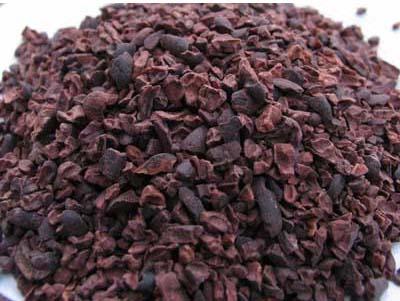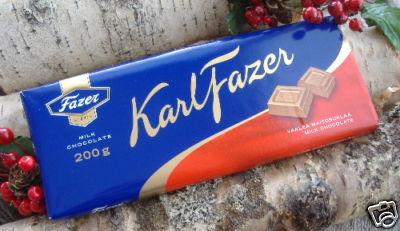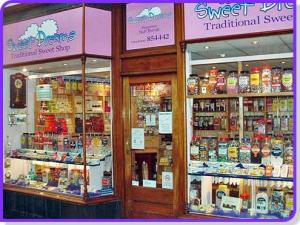To make chocolate healthy pretty much means to lose what we love most about it: cream, full fat milk, sugar. What this loosely translates as is chocolate in its most natural form: pods, nibs, cocoa butter, unprocessed cocoa. However, I am always up for a challenge, and having sourced some Cacao Nibs on an unnamed online auction site, I set to work.
It is no secret that I am a major chocolate fan (you have been reading this blog right?) so I was incredibly excited about trying the nibs. I had read such wonderful things about their health properties but more importantly (to me anyway), their taste!
When they did turn up, I opened the packaging and deeply inhaled the rich, earthy smell, more redolent of purest cocoa powder than chocolate bars. The nibs themselves resemble tiny wood chips and their texture is not far off wood either (not that I am a secret wood nibbler though). Taste wise they are much like a very high cocoa content chocolate: the flavour doesn’t come through straight away, but gets stronger as it melts and the taste lingers on your tongue. There is a slight smokiness to the nibs and they leave a not too unpleasant bitter taste in the mouth.
In this most purest of form, they are apparently a great aphrodisiac, one of the greatest sources of anti-oxidants and are supposedly good for boosting your mood. I can’t vouch too much for any of these claims but what I can wholeheartedly confirm is their intensely delicious taste when cooked or mixed with a natural sweetener.
In preparation for the experiment, I bought a book called Naked Chocolate written by superfood junkies, David Woolfe and Shazzie (no surname), who take every opportunity to extole the virtues of cacao nibs, blue sea algae and all manner of revolting sounding ‘foods’. Whilst I don’t buy into their hippy ethos of pure living through the consumption of raw foods, I am, if nothing else, always up for trying new and unusual ingredients. Generally I would not use the recipes listed in their book; for one, most of the ingredients are not your usual store cupboard staples (Optimum Source Chlorella, anyone?) and therefore they are extremely limiting, but I also enjoy trying to utilise unusual ingredients into ‘normal’ recipes such as cookies, or even chilli. I think it’s important as a cook to familiarise yourself with recherche ingredients, and to use them in everyday recipes is the best way of achieving this familiarity.
The truffles are an adaptation of a recipe taken from the Naked Chocolate book. In fact, an amalgamation of two recipes: their truffle recipe and their chocolate sauce recipe which forms the base of many other recipes.
I made the sauce several nights ago, being not entirely sure what I was going to do with it. I was planning on making a tart or maybe some muffins but eschewed those in favour of truffles. Also, truffles exude an air of luxury, something we could do with during these lean times!
As I mentioned, they are made using a simple combination of nibs, vanilla, dates (which add natural sweetness and moistness) and sesame seeds (which add texture and give longevity to the truffles) and take no longer than five minutes from start to finish, unlike dairy truffles, which are made with fresh cream and have to chill in the fridge before you can form them. Therefore, it is feasible that you can be sitting down, bowl of truffles on your lap, watching reruns of Millennium before the craving has barely kicked in. I like this kind of cooking!
I admit that I felt a pang of dubiousness when I read the ingredients; would these taste like some mealy-mouthed, flavourless vegan substitute for rich, dairy truffles? Far from it. Whilst the texture is unlike that of creamy truffles, these have a grainy bite that is not at all unpleasant. They feel and taste substantial, and the pure caffeine in the nibs gives you a great sense of well-being. They are an instant good mood hit. The sesame seeds add a nutty flavour that is particularly tasty, and, when rolled in some deep, dark cocoa powder, they really taste sensational.
Remember though that I still had some of the chocolate sauce leftover in the fridge (we scooped some of it out with our fingers every time we visited the fridge) and because I had deep concerns about the dry texture of the truffles, I added what was left of the sauce to the final mixture. I am not certain that the final recipe required this so I am just going to give you the basic four ingredient recipe. However, if you find that the truffle mixture is a little too dry, or not sweet enough, I would suggest adding a drizzle of Agave Syrup or honey and a few drops of unflavoured vegetable oil. Remember that the nibs have no additives so may well need some lubricant.
CACAO NIB TRUFFLES – makes 12-14 depending on size
Ingredients:
Half Cup Cacao Nibs
Half Cup Sesame Seeds
Half Cup Dates
1 Teaspoon Vanilla Extract
Some Agave Syrup or Honey to taste
Few drops of Vegetable Oil
Cocoa Powder, Sesame seeds, icing sugar for rolling
METHOD:
In a coffee grinder, blend the nibs and sesame seeds until they form a dry, crumbly mixture. It will not be smooth, rather it will be quite pleasantly textured.
In a blender, whizz up the dates until finely processed. Depending on the age of the dates (mine were old and dried out that they resembled boot leather), they may take longer to process.
Add the nib/sesame seed mixture and process until combined.
Taste for sweetness and add some agave or honey. Process and taste again. If the mixture is still very dry (which it shouldn’t be at this point), you can add a little of the vegetable oil.
Pour the mixture out into a dish and press down with the back of a wooden spoon to form a firm block.
You can now form the mixture into small balls, the size of walnuts, and roll them into some cocoa powder or sesame seeds, depending on your preference.
Options: You could add some rum or kirsch to mixture, omitting the Vanilla Extract, or swap the dates for dried figs or perhaps glace cherries. You could also add some chopped preserved ginger or roll the truffles in some chopped pistachios or hazelnuts.
This recipe comes with a warning: these truffles are seriously delicious!







































































